What does it actually look like – in detail – when lightning occurs in a stormy sky, a bumblebee flies, or a water-balloon bursts? We do not know. Our eyes cannot see very fast motion. This two-part Terra X-documentary reveals a fantastic universe through the lens of a new, high-speed camera in which everything has been slowed down in the extreme. The Weisscam makes motion visible which is a thousand times faster than our eyes: a cat leaping, a car during a crash test, a boxer landing a blow on his opponent’s face, the shock wave of an explosion. The details which the new camera technology reveals fascinate us not only with their beauty, but they also make it easier to understand physical and technical processes. The new program reveals natural wonders and paves the way for scientific findings. This documentary takes the viewer on a fascinating journey into the parallel world on our doorstep. It also shows, in stunning images and exciting experiments, what holds our world together at its core.
Author: 4hunters
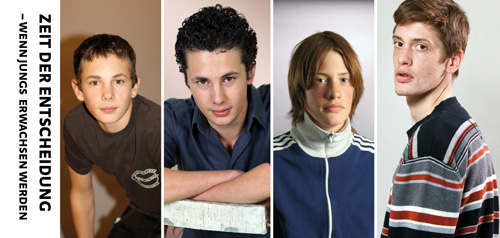
37°: A Time of Decisions – When Boys become Men
Four years after “A Time of Miracles,” we wanted to know how our heroes Benny and Renke were doing today. The teenage boys we met back then have grown up quite a bit. They are 19 and 20 years old, and both are facing major decisions. In the spring of 2004, we began filming a remarkable documentary project for ZDF and Arte. We accompanied several young people and their families for over three years as they experienced their own personal adventures during puberty. Aired on ZDF as part of the 37 Grad series in 2007, this long-term documentation titled “A Time of Miracles” shows these personal adventures. It focuses on the children’s feelings as they grow up: their desires and disappointments, their adventures, and their everyday lives. How do they themselves experience puberty, this miraculous time? And now what has become of them – four years later? Renke, who lives in Leipzig, and Benny, who lives in Bavaria, were twelve and thirteen years old when we began shooting in 2004. They played cowboys and Indians, experimented with alcohol and cigarettes, and fell in love for the first time. They had big plans, wanted to be a lawyer or a musician. What is left of those plans? Where are Renke and Benny in their lives in 2011? Four years after broadcasting the first season, the audience can see the two boys again. Now they are living in a time of decisions. They are between 19 and 20 years old, have moved out of their parents’ homes and more or less successfully taken their lives in their own hands. Renke is looking for the right job while Benny still dreams of having a career as a rapper. They are experiencing the feeling that things have only just started!
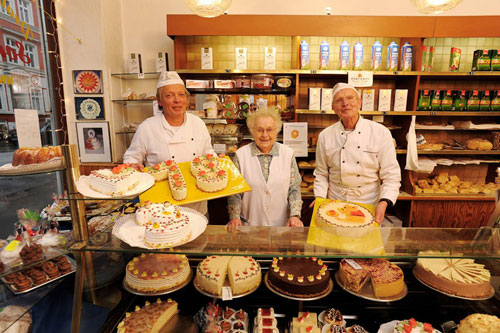
Local Cakes – the last cake bakery in Hamburg’s red light district
In the Rönnfeld pastry shop everything has been made by hand for more than 50 years. Master confectioner Holger Rönnfeld has exactly the right touch, with a mixture of modern management and the glorious traditional store where his 82 year old mother Helga, still stands behind the counter every day!
Often she has no time for a lunch break: “When I rest, I feel the arthritis,” says the fiesty old lady who needs her customers as much as her husband, senior chef Harry, needs his bakery.
Author Anja Glücklich follows the charming family through their working life, which is often turbulent. Sometimes this is a big challenge, but they all want to keep the last pastry shop in St. Pauli alive. “I’m often asked, “How do you manage to do so well?” “Innate talent, perhaps,” says Harry Rönnfeld, producing another fine leaved marzipan rose with his 84 year old hands. His daughter-in-law Monica designs the most unusual cakes, while her husband Holger enjoys delivering everywhere in the neighborhood and older sister Helga reveals heart and soul in the best stories about St. Pauli to the visitors on city tours, which stop in front of the shop. For example, how one day her husband had to deliver a cake to Herbertstrasse, just around the corner from the Reeperbahn…
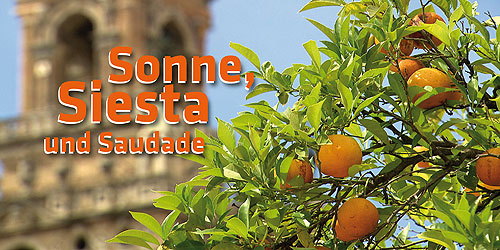
Europe‘s Wild South – A Voyage of Discovery Around the Iberian Peninsula
In this ten-part series we will show viewers how multifaceted Iberia is, both those areas near the well-known tourist hotspots but also those off the beaten path. During our 3,150-km-long journey along the coast, we will discover fascinating landscapes, unique flora and fauna, charismatic people, millennia-old culture, and culinary specialties.
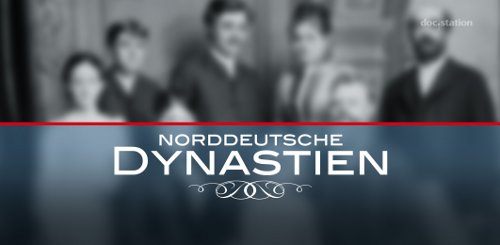
North German Dynasties II
On foot, with only a few belongings in a bundle, the journeyman confectioner Johann Georg Niederegger goes on a journey in 1800. There is a war in his Swabian homeland, who needs a confectioner now? His path leads him north to Lübeck. The speciality there – marzipan. Wars, trade blockades, competitors, the Niederegger family business has defied all adversities over the centuries. The story of the Meyers in Papenburg begins with them being called Meyer from one day to the next. The ancestor of the family, Henrich Janssen, a shipwright and seafarer, was recruited from Völlen in East Frisia to Emsland around 1700. Janssen wanted to try his luck there. When the Protestant East Frisian registers as a new resident in Papenburg with the parish priest, he announces: There are already so many Janssen, he is now called Meyer and is Catholic, like everyone else in Emsland. The family has now lived in Papenburg for over 200 years, first building wooden barges with sails for peat cutting, then venturing into the development of steamships, concentrating on the construction of special ships at an early stage and still being extremely successful today with the construction of cruise ships. The beginnings of Hagenbeck’s zoo go back six generations. Gottfried Hagenbeck trades in fish in the harbour suburb of Sankt Pauli. A few young seals caught in the Elbe fishermen’s net unexpectedly give his life a new direction. He puts the animals on display in large, wooden wash tubs on Spielbudenplatz and takes an entrance fee for them. The family of showmen becomes Europe’s largest animal traders and in 1907 Hagenbeck’s Zoo is established in Hamburg Stellingen. Against all odds from their environment and at great risk of their private or family fortune, they all fearlessly realised their dream of independence in uncertain times. They believed in themselves and their business idea. That is what makes them so unique, so successful. Many a business idea was born in Germany’s founding years. Many disappeared from the scene at the first headwind. Only a few, like the companies mentioned above, have survived for more than a century, despite all the economic and family crises. Norddeutsche Dynastien Niederegger – Ein Leben für Marzipan 16.12.2010, 21:45, NDR Norddeutsche Dynastien Meyer Werft – Die dicken Pötte von der Ems 3.1.2011, 21:45, NDR Norddeutsche Dynastien Hagenbeck – Die ganze Welt in einem Park 4.1.2011, 21:45, NDR
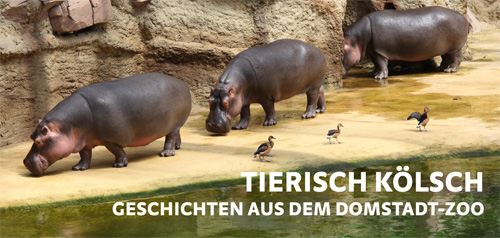
Stories from the Cologne Zoo (9th Season)
The biggest birthday present is one the zoo is giving itself. After fourteen months of construction work, the Hippodrome is ready! This is a 3,500 square meter home for hippos, antelopes, Nile crocodiles and eleven other African species. About 100 animals will find their new home here. That means a lot of work for Monika Assenmacher and Dirk Vogt, the main keepers in the zoo‘s new prestigious habitat.
The California sea lions also have a move to deal with. Their pool has to be completely renovated, so the harem goup will move temporarily to the unoccupied hippo pool in the old Elephant House. But before Yumni, Astrid and the others agree to go into their crates willingly, the zookeepers Klaus Heise and Reinhard Schabbing will have to use all their powers of persuasion.
The Jungle House is pleased to welcome a new baby. The little gorilla’s name is Gasira, and she is further proof of the successful breeding methods at the zoo. The baby girl is the sixth which the silverback gorilla Kim has fathered in Cologne. But the joyful feelings about the birth are mixed with many worries. Zookeeper Klaus Pyszora is all too aware that one out of four animals dies in the first year.

Zoo Stories from Dresden (ZDF) (Season 5)
In this fifth season, the animals from Dresden continue to tell their exciting and entertaining stories from the zoo. In addition to seeing old friends and the most popular animals again, viewers will also get to know many new people and animals.
Just take the Ape House. The orangutans have had two babies, which keeps up the zoo’s great track record. Ever since they managed to raise an orangutan to sexual maturity in 1927, the world’s first in captivity, the Dresden zoo is considered a leader in breeding. To date, 28 orangutans have been born here. The youngest, Duran, is almost a zoological sensation because his mother Djudi is already 36-years-old.
After completing the Africa House, Lion Canyon, and a giraffe enclosure, the next big project is making everyone in the zoo hold their breaths: the construction of the Professor Brandes House. Monkeys, koala bears, and crocodiles are supposed to live under one roof and be shown in species-appropriate habitats. The move to the new house is already giving Olaf Lohnitz a headache. The keeper has to ensure that all of his charges are transported safely to their new home. Whether it is Manolo, who was bottle-fed and raised by the keepers, or Brian, the lion-tailed Macaque – each monkey has different needs which have to be taken into consideration.
The year 2010 could, however, be a very successful one for Cathrin Ludwig’s predatory cats. Samira, a caracal female, is expecting a cub, and her daughter Lucinda might be pregnant for the first time as well. Layla and Jago, the young lion couple, could be expecting this year for the very first time as well…

Louis Begley
Before becoming a writer and skilled chronicler of the American upper class, Louis Begley was himself a successful New York lawyer for many years. The bankers and lawyers in his novels are adept at using their money and intellect to help them out of moral dilemmas.
Begley draws on his own experiences for his writing. He survived the Holocaust and immigrated to New York with his mother. He went from being a brilliant student at Harvard Law School to partner in the prestigious law firm Debevoise & Plimpton, for whom he also worked for several years in Paris. He began to write fiction at the age of 56. His first novel “Wartime Lies” was an award-winning bestseller.
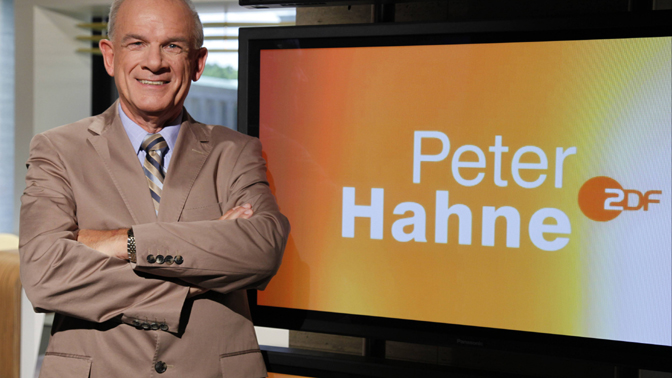
Peter Hahne – weekly talk show
In this show, small groups of two and three allow for controversial topics to unfold. The host Peter Hahne does not want the usual catchphrase debates but rather clarifying conversations with people whose professionalism does not get in the way of their human side. Nuances and personal stories have more space and importance here. At times, Hahne as well as his guests will have to show their true colors on difficult questions.
Home…
In the era of globalization, economic crisis and changing values, many Germans are discovering how important it is to feel at home somewhere. These clips express this longing, and they send a positive signal in the face of fierce debates about parallel societies and foreigners’ lack of integration. We take into account that “home” is a romanticized term, a kind of love letter to a place: Janina: “If home is a place, than it has to be the Ruhr region here. The Ruhr University is a really ugly concrete block of a building, but I like it anyway.“ Nikeata: “Kreuzberg has so many extremes, like the drug addicts, but there is also this multi-cultural thing going on, which I think is cool, of course. I can move about freely here. I know the people, and it’s fun. That’s why it’s my home.“ Arnold: “Home is the place where I live. A home is something that comes from having a relationship with the earth, the plants, the animals and the humans there. Then a place becomes a home.“